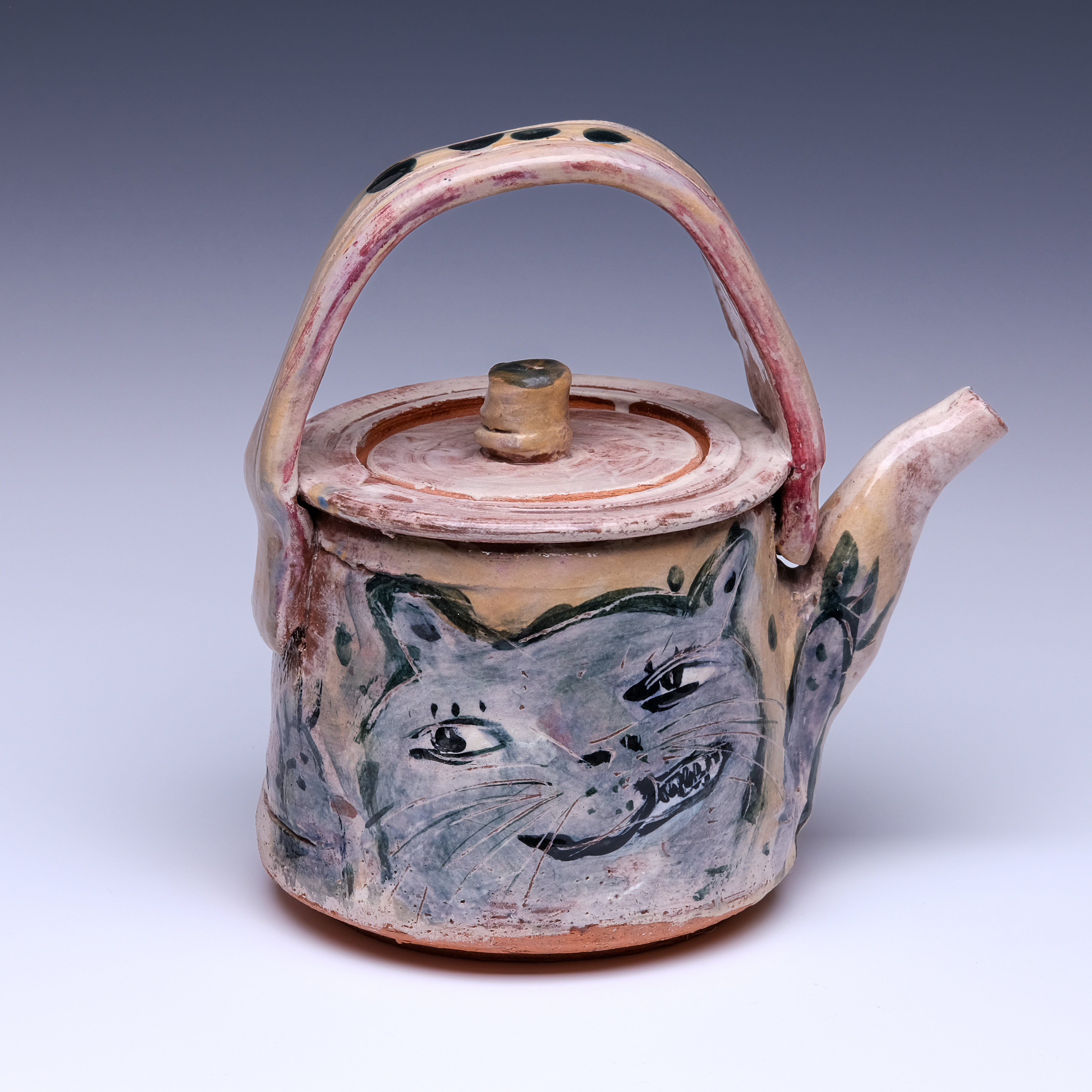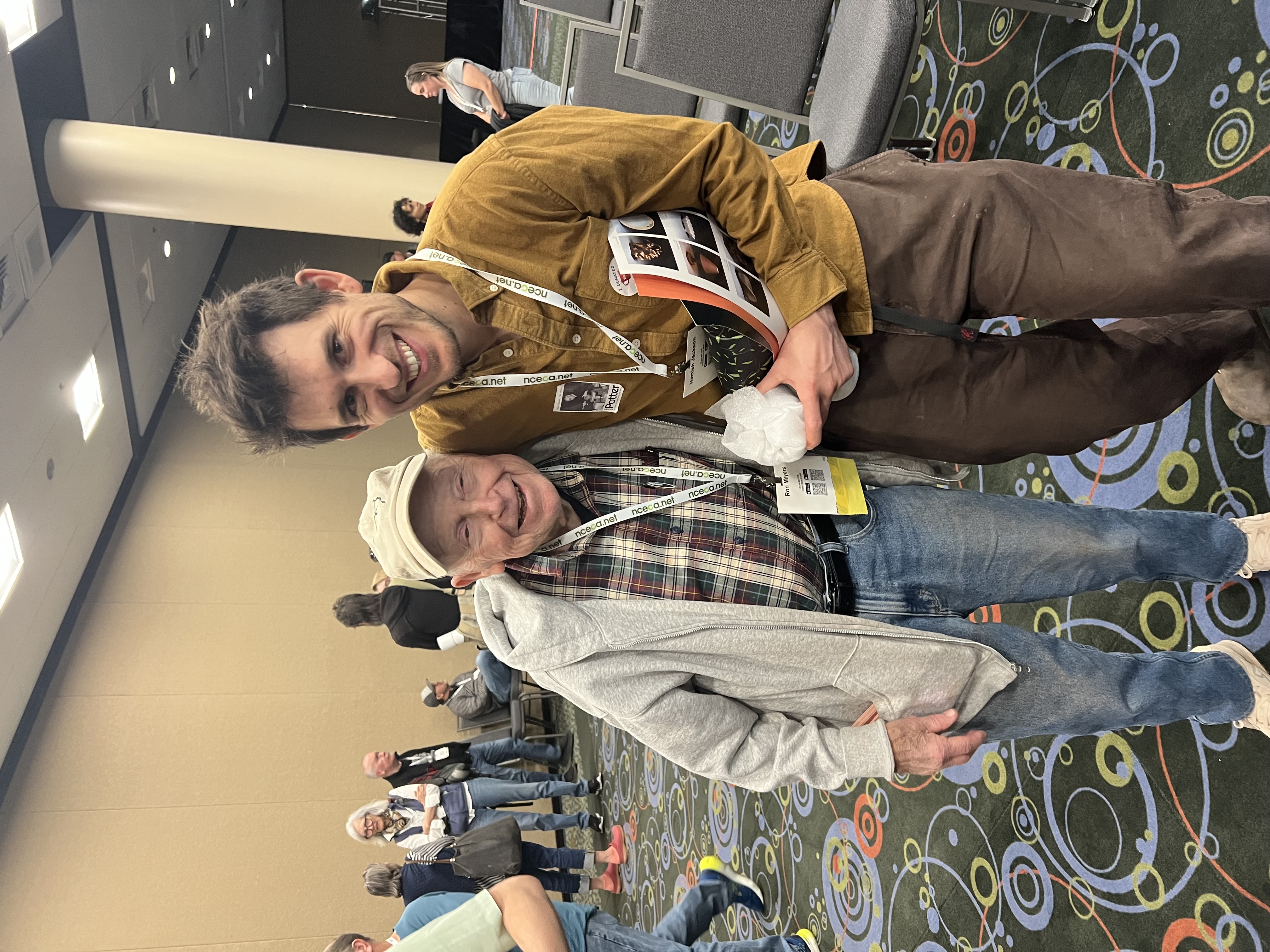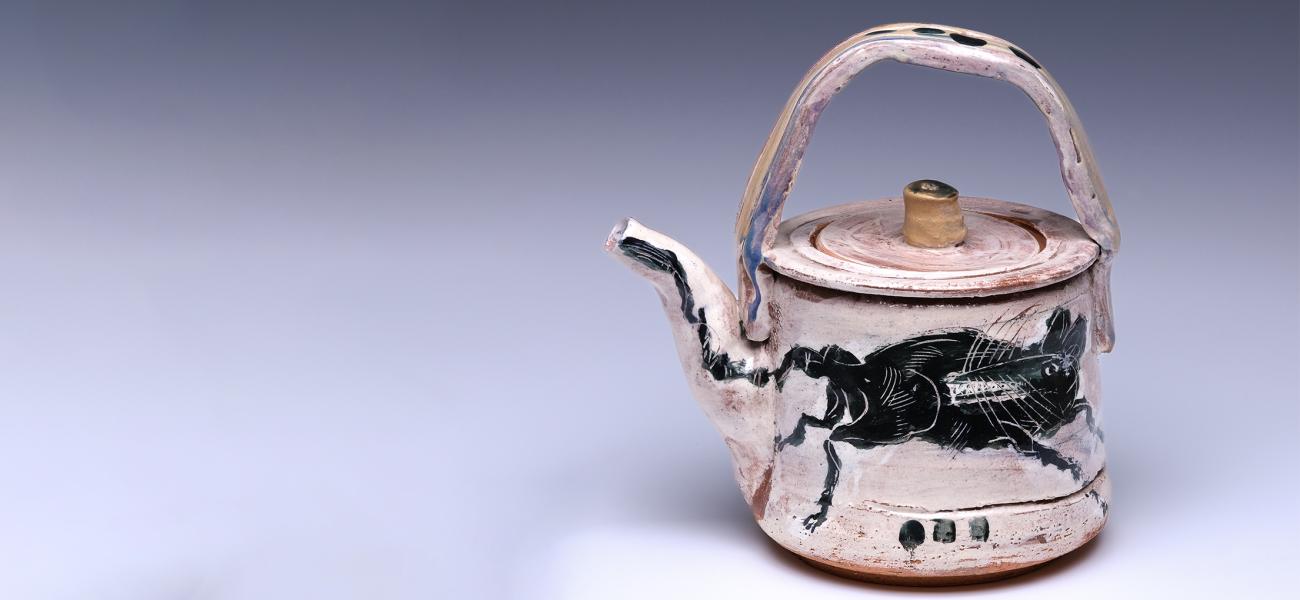Embracing the Squish with Ron Meyers
Editorial note: This is the first in the "Embracing the Squish" series of interviews by Hamish Jackson for Studio Potter. In this series, Hamish speaks with ceramic artists whose pots seem to defy the finality of the firing process – works that hold onto the softness, the movement, and the vulnerability of wet clay. These are pots that remember the hand, the squeeze, the gesture.
Hamish's conversations explores how these artists use clay’s most tactile qualities to express feeling, form, and meaning. From pinched mugs to slumped jars, these pots carry a sense of immediacy, even playfulness – a kind of looseness that invites both curiosity and comfort.
There is much to learn from potters who embrace the squish. Their work reminds us that the process is not just about control and refinement but also about letting clay be clay. – Randi O'Brien, editor
Ron Meyers
Born in 1934, Ron has been a luminary in the ceramics field for over 50 years. His pots are cherished by collectors all over the world, and his influence is widespread. He lives and works in Georgia, US.
The interview took place on April 16, 2025, via Zoom. It has been edited for brevity.

Hamish Jackson
Do you remember when you first played with clay?
Ron Meyers
I was an elementary art school teacher. While I was teaching, I went back to school to work on another degree and took a ceramics class. And then I quit my teaching job and went to RIT (Rochester Institute of Technology) under Frans Wildenhain and Hobart Cowles. I hardly knew how to throw a pot. Frans said, “How the hell did you get into school?”
I had to go for two years. One beginner's year, and then I got into the graduate program the second year. I was fortunate in the second year. Frans always had a lot of work, and the guy who was helping him left. So then I got to work for him. Every Saturday, I went to his house to work on his stuff, and that was a real learning experience.
Hamish
What was Frans Wildenhain’s teaching like?
Ron
“Loosen up, man, loosen up! Feel free to go anywhere!” It took me a while, obviously, to get to that point but, as the years went on, I got better and better at it, and I loved animals.
Hamish
I consider you one of the kings of squishy pots. A fine purveyor and proponent of looser pots, and an inspiration to many who might want to go this route. Do you have any tips for working this way?
Ron
I think I got better as years went on. I could take more risks, or I learned how to add more stuff or do whatever. And I can't tell you exactly how that happened. It was slow progress.
Hamish
How do you like your clay? Have you always used earthenware?
 Ron
Ron
I did stoneware for a while, but I really like the red clay in the end. And the clay is fairly soft. Today, I was just making some cups, and it was a little stiff. It has to do with the new clay where I'm working. The clay was in a bag, and it got a little bit hard. So I watered it down for tomorrow. It worked, but I like it a little softer.
Hamish
So you still have the drive and desire to get into the studio?
Ron
I get to work there every day, pretty much for two or three hours a day. Two o'clock to five today. I have a little bit more freedom on the weekends, and I can go in almost all day.
Hamish
I asked your son, David, at the National Council on Education for the Ceramic Arts (NCECA) if he helped you with the loading of the kilns, and he said you were pretty self-sufficient.
Ron
I had two or three kilns, but now I'm down to just one Skutt one. I just fired it up the other day and opened it up today. I might get a firing once a month. I would be happy, happy for that, because a lot of things at this age get in your way – Doctor's appointments or doing this or that.
Hamish
How do you feel about functionality? Should a lid fit?
Ron
I try to make them fit. I want them to be functional in most ways. You know, I'm not too interested in exploring the shapes or forms so much as putting a surface on that I want to put on. Yeah, Frans Wildenhain probably wouldn't like that. He’d say, you know, you need to explore things, Ron, break it up. Throw it down. Do this. Do that. But I tried that, but I never liked it too well. So I'm happy to do what I do now.
Hamish
Do you experiment with forms much? I imagine that when you throw, you are already thinking about the decoration and don’t want to go too wild with the forms?
Ron
I think the pots I throw are pretty straightforward at this point; I don't experiment too much. I'm making yunomis and plates and bigger plates and bowls. It's sort of simplified in some ways, so that I can manage. And they all fit in the kiln.
I was just making yunomi today, and there has to be a surface that I paint on. I go through the list of what I call the usual suspects. At my age, I sometimes forget, so I have to look at old stuff that I go back to. Oh, there's one.
I keep repeating the same imagery over and over again on different forms. They're all the same dumb animals. Smart animals!
Hamish
It doesn’t seem like you get bored, though?
Ron
I have not gotten bored. I keep thinking, what else can I add to it? But there are only so many animals that there are in the world. I'm always looking for more and how I can change them or alter them. I haven't done lions yet. Maybe I could put lions in. Yeah, I'm gonna write that down.
Hamish
How did you get going on the animals?
Ron
You know, I went to the zoo and saw these animals there. It was just natural to kind of copy. I started to draw figures and animals, and cartoons in high school. That's what I wanted to be, a cartoonist. So that's how that kind of came about. I like animals, and I like the expressions that come out of them.
Hamish
Did you pursue being a cartoonist?
Ron
I did, but it got rejected. I made Christmas cards with cartoons, though.
Hamish
Did you decorate your pots from the very beginning?
Ron
As an elementary high school teacher, I do a lot of drawings of animals and stuff with the kids, right? But not on the pots at the beginning. It started after I got into the second level. Frans said, “You could put something on the surface.” And I said, “What would that be?” So he's the one who encouraged me.
Hamish
I love how expressive your animals are, and often unexpected. This goat I am holding has a bit of a snarl to it.
Ron
Well, I don't want to make them look too happy. I'd like to have a little angst involved. I grew up in Buffalo, New York. There were only snarling dogs and cats. I want them to have a little edge. As humans, we all have a little edge to ourselves. So they should, too. I never thought about that. I'm just making that up now.
Hamish
When you unload the kiln, can you pinpoint what makes one pot particularly good as opposed to another one?
Ron
I don't like it if they look a little tense or tight. I want them to have freedom or imagination. The one I'm drinking out of right now doesn't have any imagery on it, just has a little loosey-goosey painting.
Hamish
Do you think much about the customer, you know, the end user? Have you tended to make more of the things that have sold better?
Ron
I make what I want to make. If they want to buy it, that's fine. If not, I don't care. Gallery owners would like to say, well, you know, you need to make more of these. And I said, well, I'm not always in the mind to make those. I just want to do what I'm interested in.
Hamish
I'm sure you have no problem selling your pots now. I know you taught a lot over the years, too. Was that to help pay the bills?
Ron
No, it was sort of a natural thing to do. I liked working and teaching. I was six years at South Carolina to start with, and then they didn't renew me after six years. Then I heard of a job in Athens, and my wife insisted I go there, and it was the right move. I mean, I was ready to do it, too. So then I taught another twenty years. So I had eight, six, and twenty. I don't know how much that adds up to, but that was enough years teaching, and then I felt great to get back, just get into the studio.
Hamish
I've met several people who were taught by you and said you were very inspiring. I wonder, when you were teaching, were there any particular prompts or assignments that you enjoyed giving to students?
Ron
Loosen up was the big one. I just tell you, you know, this is what I do, and you can emulate that, but you have to find your own way as well. Every pot looks the same shape, but you could put any surface on it, or you could treat it in a different way. Find your own way. Put your own personality into it. Yeah, somehow find your own way.
Hamish
It’s hard to do. I am struggling with that still.
Ron
It takes us a long time to do it. I mean, I'm sure you've got a lot of other people's work that you admire, but you can't always copy that. You know, you have to find your own personal little touch, whatever it is. I told them they can't copy me. You have to find somebody else. Copy yourself.
Find your own route, and it's hard to do, but if you think of all the different artists we've had, they've all had their own little way, right? Yeah, they're all the same in some way. But there is also a difference in the way you do this or that, and how you enrich it.
Hamish
Can you pinpoint how you figured it out? How did you develop your style?
Ron
I won't say it was like a lightning strike, because it was a slow lightning strike. It took me a while. I have to say, Frans was really wonderful. I mean, he explored a lot.
I would go to his house on weekends to help him. Wedge his clay or clean his studio up or whatever. And sometimes we traveled to deliver his work. It was as much a learning experience as being in school. He always talked about how you can lighten up and always expressed that you had to find your own way. And don't look at anybody else's books. I always wanted to be a cartoonist, so that's where they kind of came from.
Hamish
(Pause) You got me thinking, Ron.
Ron
I never thought I'd get anybody thinking.
Hamish
Is this the advice you would give to a young potter or a student?
Ron
I say try a number of other things. Don't just do what I do. Look at other people's work, you know, find your own way, and start thinking about how you coordinate stuff. And there’s much surface enrichment that's going on now. The lines you make and how you touch the clay have to be your way.
Hamish
Are you happy with how your career in pots has been?
Ron
I just feel fortunate that I was lucky to find being able to get a job teaching. Because I thought I was just going to be a potter. I mean, I was a public art teacher, so it just sort of fell in place, but I don't know, I can't say that I've been disappointed about anything particularly. I've had a good life, and I've met a lot of great people and been inspired by them.
Frans was probably the most important person in my life, because he's the one who always prodded me to find my way and not try to emulate anyone else. Just try to find what you're trying to say and how you can do it.
Hamish
I was impressed at NCECA in Salt Lake by the panel that George McCauley put together about you. There were so many people in the room, you know, so many people love you,
 Ron
Ron
So you were there. Wow. Well, I was surprised at how many people were there.
I say George adopted me. He's just trying to promote me more than ever, and I have to thank him for it. I guess I already did. It was a nice crowd.
Hamish
Did you have a good time at the conference?
Ron
I did, because I met a lot of people I had taught and friends that I've known over the years. So it was kind of great to go, because I hadn't been for quite a few years. It has gotten so big. You know, I did not go to the first one, but the second one, when there were two to three hundred people. I met a lot of people that I didn't know, and it was kind of great.
Hamish
All right, I have one final question. If you could only eat one vegetable for the rest of your life, what would you pick?
Ron
Lettuce.
Honeymoon salad?
Lettuce alone.
Hamish Jackson
Well, thank you. Thank you so much for doing this, and thanks for all your posts and inspiration.


